How Sketching Like a Sniper Can Help Your Situational Awareness: 13 Things You Should Practice Observing
How Sketching Like a Sniper Can Help Your Situational Awareness: 13 Things You Should Practice Observing
Do you sit facing the door at restaurants? Do you always back into parking spots? Today, I’d like to share some situational awareness tips you can use when you’re out and about with your family, that will put you at another level when it comes to identifying your surroundings and being prepared for whatever comes your way.
Know Your Neighborhood (and your restaurants)
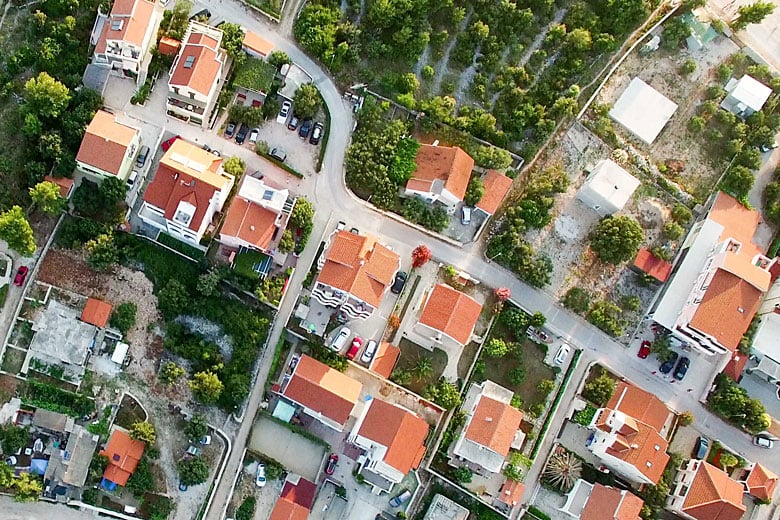
There’s a saying that I use often when discussing home security, which is “know your neighborhood.” The baseline is the standard by which anything out of the ordinary stands out against. Meaning that if you know the cars that commonly park in and around a neighbor’s house and one day you see an unmarked white van parked on the street, that’s out of the ordinary; outside the baseline.
Noticing this and other details like it, can help alert you to threats that might arise. The devil is in the details, as they say and all danger comes from this place. The goal is to recognize it ahead of time and have already prepared your response.
That’s what this article is all about today, doing the upfront work to have a plan in case something goes wrong. Just like your neighborhood, there’s advance work you can do on places you visit on a regular basis and even those you’ve never been before.
Map Study
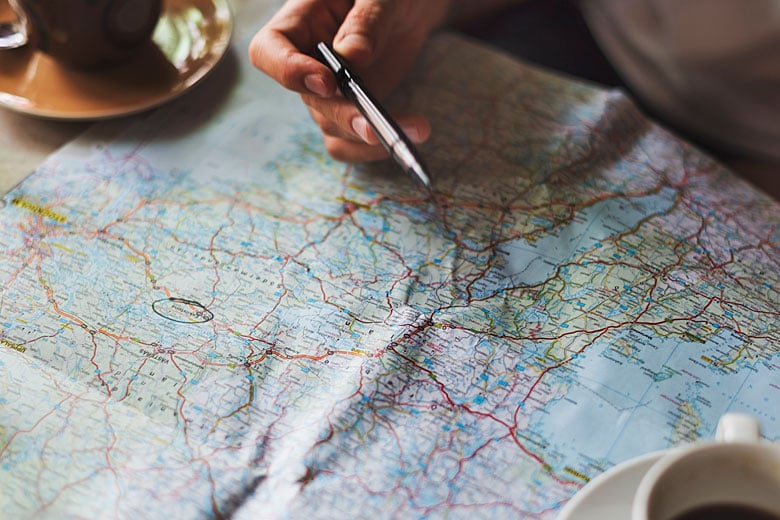
Maps aren’t just good for navigating, they can help you learn the ingress and egress routes, points of interest and emergency resources of an area that you’re planning to visit. You don’t even need a physical map, (though one is good for backup) most of this area familiarization can be done using Google Maps or another online navigational resource in advance of your visit.
With all the advancements in technology today, there’s even a way to get a three-dimensional view of the area with online map views and Google’s Street View can be an invaluable resource to learn about terrain features in the immediate vicinity.
In fact, it’s only a matter of time before we can pull up an interior 3D map of popular destinations.
This is all about knowledge work. Knowledge is power and the more familiar you are with the places you visit, or even intend to visit, the more prepared you’ll be for responding to threats that could occur and where you should go during an emergency.
A great example, unfortunately taken from tragedy, is a former Marine who was on scene during the recent Las Vegas shooting. Not only did he use his skill-sets to render aid to the victims, he “requisitioned” a truck and transported as many people to the Hospital as he could, eventually making multiple trips and saving lives.
While I don’t know whether he had prior knowledge of the nearest Hospital’s location, that’s just one example of how multiple skill-sets and prior knowledge of an area can be used as a force multiplier and an asset to those around you.
The Benefits of Sketching Maps

While doing proper advance work on an area is a skill-set that’s in use by many government agencies, another carry-over skill from the Sniper community is that of sketching maps for intelligence purposes. Snipers often create maps of the areas they’re operating in to note specific details like range estimation and target size. This skill is also magnified by the intelligence community, who often need to create maps of locations for intelligence reasons, direct from memory.
Observation is a critical skill in both these examples and you can develop your observational skills by starting to observe the important details inside and outside a building, later using that information to sketch your own maps. This provides two benefits, one is having your own map of an establishment if you ever need it in the future and the most important reason is using the creation of maps to develop your observational skill-set through repetition.
The more you practice observing a location and then drawing a map of it based on what you remember, the more powerful your observation will become. The reason being is that you’ll no doubt miss important details you wish you’d remembered when later drawing a map.
That will force you to think about them and memorize them better the next time. This repetition will hone your skill to the point where this observational detail of places you go becomes second nature.
Your goal should be to draw so many maps after you’re out and about, that you get to the point where you no longer have to draw them and you’re instinctively noting the details you previously would have had to memorize to build a map off of.
As an example, how many times have you heard, or even seen information that you wanted to remember, but never wrote it down? More than likely, that information evaporated from your short term memory and left you kicking yourself for not writing it down. That’s the same in this example, however you’re not only getting the practice of writing things down to remember them later, you’re getting the practice of being forced to observe important details, in order to be properly prepared for a response to potential threats.
Confused yet? Let’s look at what kind of details I’m referring to observing, by using the example of a restaurant you’ve just arrived at with a group of friends. At this point, if you weren’t already familiar with the area you’re traveling to, a proper map study would need to be done, as mentioned earlier.
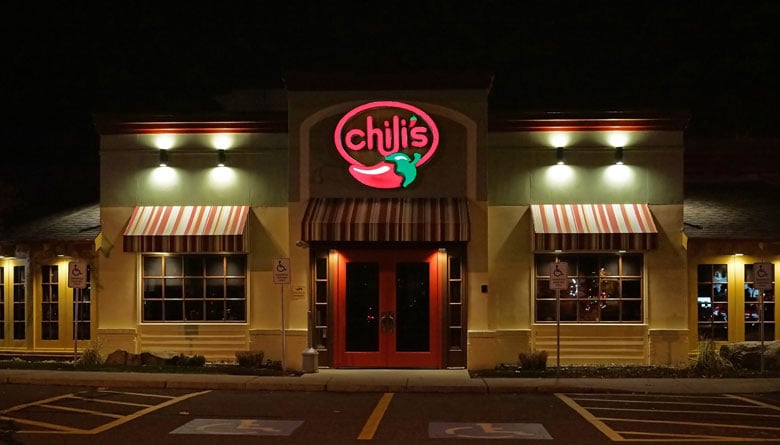
What to Note
- Avoid the Valet. The last thing you want to do in an emergency is wait on someone to bring your vehicle up. They’ll already be working with other cars and more than likely not have the resources to help you quickly.
- Where should you park? Can you maneuver your vehicle out of the spot, even if someone double parked in front of you? Is your parking spot in an optimal position in relation to the egress points of the parking lot, or is that not something you have to worry about, due to having a lifted suspension to negotiate curbs and sidewalks if you had to?
- If you’ll be leaving the building at night, what does the parking lot lighting look like? Will there be dark areas you’ll be crossing to get back to your vehicle? If so, consider parking elsewhere in a well-lit area. There’s always the health benefit of more walking by parking further out, but realize that you’ll need to cover more ground if you have to get back to your vehicle in an emergency.
- Back in to the parking spot for easier egress when you leave and take the time to observe after you put the car in park. What’s the baseline? Is anything out of the ordinary with the vehicles you’re parked amongst? Do the people walking around, or coming in and out of the establishments, look to belong?
- Note the location you parked and burn it into your memory, you don’t want to be running around trying to remember where you parked in an emergency. Ensure that anyone who could be responsible for driving if you were incapacitated, knows this info as well.
- As you approach your destination, note the building layout. What direction is the front door / front side of the building facing? Is the front of the building all glass? What’s the composition of the exterior walls? Are they made out of concrete, stucco? This is important to note for not only the purpose of cover, but also for how wide your field of view will be from the inside as you’re looking out towards the front entrance.
- As you step inside, note the table layout, where’s your optimum seat at? Can you put your back to the wall and still see the entrances? If the restaurant isn’t self-seating, ask the host or hostess for a specific location. Don’t be afraid to speak up and let it be known where you’d prefer to sit.
- Start looking around for additional entrances and exit doors, emergency or otherwise. There’s usually always an exit in a restaurant kitchen that leads outside for easy disposal of trash into a dumpster. It might be impossible to confirm this, but put that into your memory bank.
- Does the restaurant have cameras? How many are there and where are they pointed? Being recorded isn’t always a bad thing, it can often prove your location if it was ever called into question.
- Where’s the hard cover? Meaning if bullets started flying, where would you move to for cover? FYI, a flipped over restaurant table is not the answer. Kitchens are usually a great spot, not only because of the heavy cooking equipment and thicker walls designed to mask the noise coming from inside, but because there’s also probably that exit door we talked about.
- Size up everyone in the restaurant, even if eye contact makes you uncomfortable. Get a read on people and notice if the way they’re acting looks out of the ordinary for the baseline of the establishment. Is it just a quarrel amongst a couple, or something that could turn violent at any moment? Anything that piques your interest should be followed up with noticing distinguishing details about said person. Not just what they’re wearing, but any identifying marks or features.
- Keep your head on a swivel and keep observing. This shouldn’t be to the extreme of detracting from your enjoyment of having a meal with friends, but look at the entrance every once in awhile and scan the restaurant. If you think of this in terms of the Col. Cooper Color Code, you’re still in the Yellow here.
- Your departure from the establishment is no different than your entrance, continue observing the environment all the way back to your vehicle. Once there and everyone is back inside the vehicle, get in the habit of immediately locking the doors if they don’t do so automatically when you turn the key. It’s better to habitually lock them anyway, to avoid a surprise of someone intent on doing you harm from opening the door while you were distracted and hadn’t turned the key yet.
Colored Structure Reference
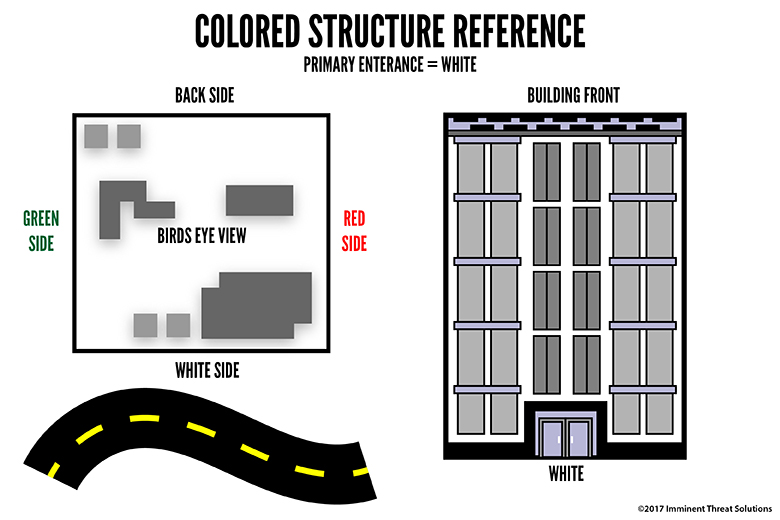
One last thing I want to go over is an easy to remember system for quickly identifying different sides of a building. This Colored Structure Reference can be good for a group of friends communicating internally, or for couples to use for identification.
While it’s always good to have a general ideal of the cardinal directions wherever you go, it’s not always intuitive to say “pick me up on the southwest side of the building.”
Using the colors Green, Red, Black and White, label the front primary entrance White. Opposite of White, or the back of the building, becomes Black. While facing the building, the right side becomes Red. I remember this as “Red Right.” Opposite of that is Green, so the left side of the building becomes Green.
This Colored Structure Reference is particularly useful for radio communication and then later for identifying a building’s layout.
Closing
I hope this article has given you some information on ways that you can train your powers of observation and things to notice the next time you’re out and about. Again, the goal here is to develop your observational skill-set and notice threats before they happen, in addition to pre-planning a response and course of action should anything occur when you’re out.
Stay vigilant and prevail!






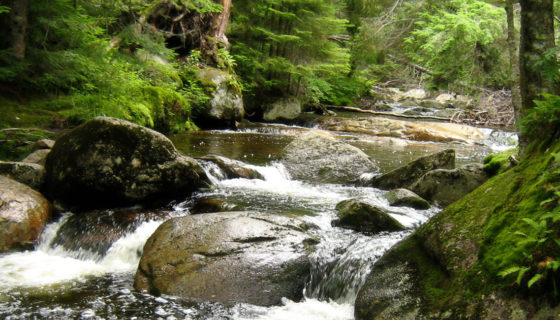


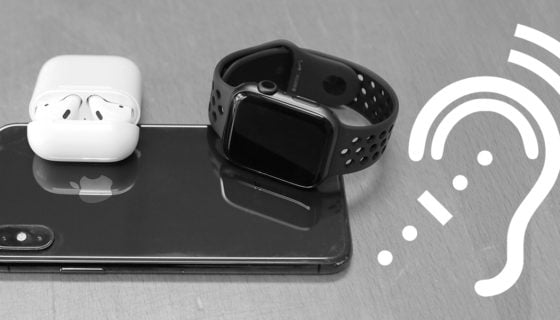

Discussion